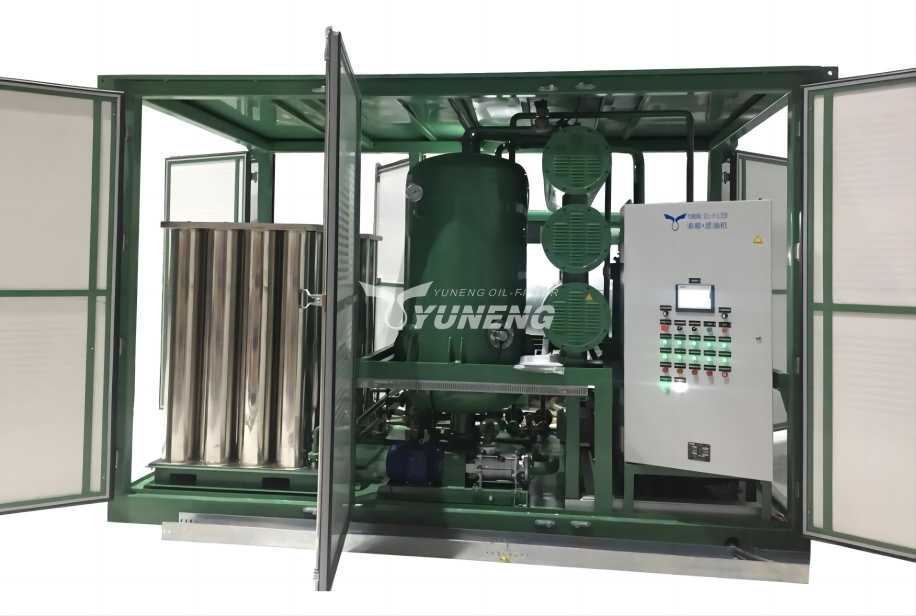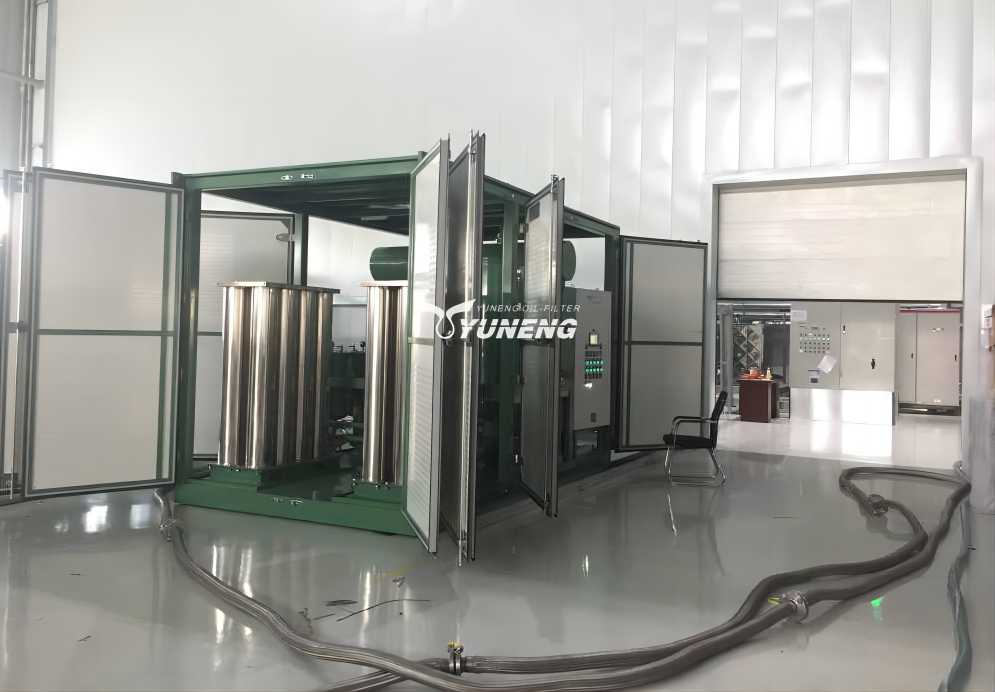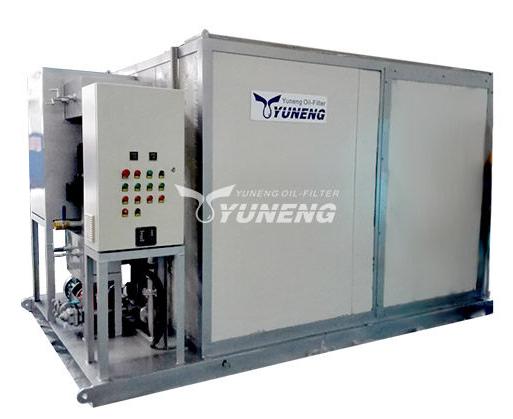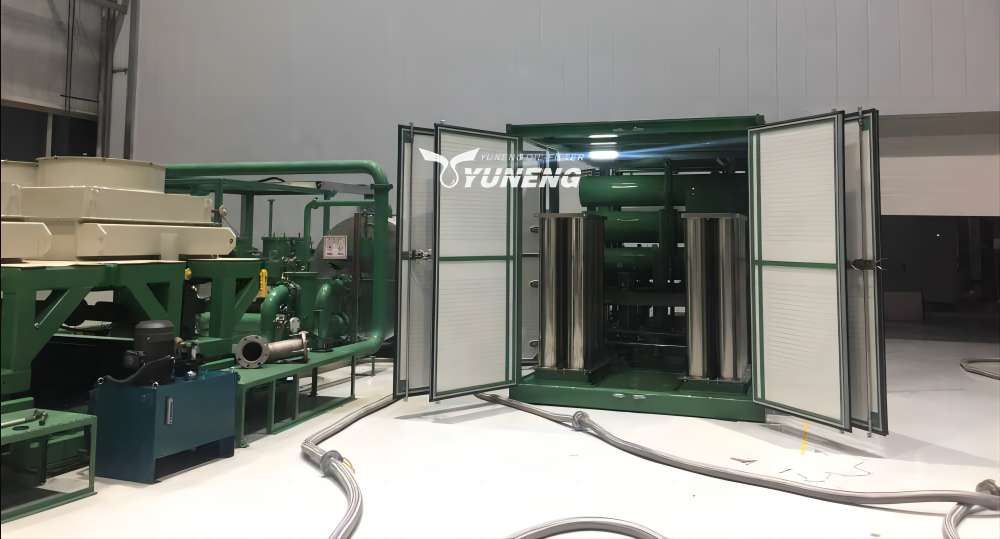The How and Why of Transformer Oil Reclamation
Electrical transformers are vital components of the power grid, responsible for efficiently transferring electrical energy at different voltage levels. These transformers rely on a specialized insulating oil to cool internal components and prevent electrical arcing. This oil, typically a highly refined mineral oil, degrades over time due to exposure to heat, oxygen, and electrical stresses.
Disposing of used transformer oil poses environmental and economic challenges. Improper disposal can lead to soil and water contamination due to the oil’s toxic properties. Additionally, replacing degraded oil with virgin oil is a costly endeavor. Transformer oil reclamation offers a sustainable solution by restoring the properties of used oil, allowing it to be safely reused in transformers.

Why Reclaim Transformer Oil?
Reclaiming transformer oil presents significant advantages from both a financial and environmental perspective.
- Cost-Effectiveness: Transformer oil reclamation is a considerably less expensive option compared to replacing degraded oil with virgin oil. Extending the lifespan of existing transformers translates to significant cost savings. Maintenance schedules can be optimized by avoiding unnecessary transformer replacements due to degraded oil. Furthermore, oil reclamation eliminates the disposal costs associated with used transformer oil.
- Environmental Benefits: Transformer oil reclamation promotes resource recovery and minimizes waste generation. By restoring used oil to a usable condition, the demand for virgin oil production is reduced. This translates to a lower environmental footprint associated with oil extraction, refining, and transportation. Additionally, reclamation prevents improper disposal practices that could lead to environmental contamination.
Understanding Transformer Oil Degradation
Over time, several contaminants accumulate in transformer oil, impacting its insulating properties and overall performance. Here’s a breakdown of the common contaminants and their effects:
1. Common Contaminants in Used Oil:
- Moisture (water): Water ingress into the transformer, either through leaks or condensation, is a major concern. Moisture reduces the oil’s dielectric strength, increasing the risk of electrical breakdown.
- Sludge and sediment: These are solid particles formed from the degradation of cellulose insulation within the transformer and oxidation byproducts of the oil itself. Sludge accumulation can impede heat transfer and clog filtration systems.
- Acids and oxidation byproducts: Exposure to heat and oxygen triggers the oil’s breakdown, resulting in the formation of acidic compounds. These acids further accelerate oil degradation and contribute to insulation paper deterioration.
2. Impact of Contaminants on Transformer Performance:
The presence of contaminants in transformer oil has a detrimental effect on its ability to perform its critical functions. Moisture significantly reduces the oil’s dielectric strength, the ability to resist electrical current flow. This increases the risk of arcing and potential transformer failure. Sludge accumulation hinders heat transfer within the transformer, leading to overheating and accelerated degradation of both the oil and cellulose insulation. Acidic byproducts further contribute to insulation paper deterioration, ultimately compromising the transformer’s overall reliability

What is the Transformer Oil Reclamation Process?
Transformer oil reclamation is a multi-stage process scientifically designed to eliminate contaminants and restore the insulating properties of the oil to meet or exceed industry standards. Here’s a closer look at each stage:
A. Overview of the Stages:
- Pre-filtration: This initial stage focuses on removing large, physical contaminants like dirt, debris, and metal shavings that might have accumulated in the used oil. This is typically achieved by passing the oil through coarse filters with a specific pore size that traps these larger particles while allowing the oil to flow through.
- Dehydration: Water removal is critical for restoring the oil’s ability to resist electrical current flow (dielectric strength). Dehydration is often accomplished using specialized equipment called vacuum dehydrators. These dehydrators utilize a combination of heat and low pressure to remove both dissolved and entrained moisture from the oil. Dissolved moisture exists as microscopic water molecules dispersed throughout the oil, while entrained moisture refers to larger water droplets or bubbles physically trapped within the oil.
- Acid Removal and Neutralization: Acids and other polar contaminants, which have a chemical attraction to water molecules, can accumulate in used oil. These contaminants can accelerate oil degradation and damage transformer insulation. Various methods are employed to remove these acidic compounds, including:
- Clay Adsorption: This method utilizes a specific type of clay with a high surface area and a strong attraction for polar molecules. As the oil is passed through this clay, the acidic contaminants are selectively attracted to and retained by the clay particles, effectively removing them from the oil.
- Fuller Earth Filtration: Fuller Earth is another type of clay often used for filtration purposes. Similar to clay adsorption, fuller earth filtration removes acidic and polar contaminants by attracting and retaining them within the clay particles during the filtration process.
- Final Filtration (Polishing): The final stage, also known as polishing, ensures the reclaimed oil meets the required cleanliness standards. This stage involves passing the oil through high-efficiency fine filters with an even smaller pore size compared to pre-filtration. These fine filters capture any remaining microscopic particles that might have escaped previous stages, guaranteeing a clean and contaminant-free oil product.
B. On-site vs. Off-site Reclamation:
The decision of where to perform transformer oil reclamation depends on various factors. Here’s a breakdown of the two main options:
- On-site Reclamation: This approach involves utilizing mobile processing units that are conveniently transported to the location of the transformer itself. On-site reclamation is often preferred for situations where a quick turnaround time is crucial and minimizing oil handling is a priority. This method is particularly suitable for transformers located in remote areas or those requiring urgent oil restoration.
- Off-site Reclamation: Off-site reclamation involves transporting the used transformer oil to a specialized facility specifically designed for oil processing. These facilities typically have larger processing capacities and may offer a wider range of treatment methods compared to mobile units. Off-site reclamation is a viable option for processing larger volumes of used oil or when the oil requires specialized treatment beyond the capabilities of on-site mobile units.

Benefits of Reclaimed Transformer Oil
Reclaimed transformer oil offers several advantages when used back in transformers:
- Meeting industry standards for electrical properties: Reclaimed transformer oil, when processed through a proper reclamation process, can achieve electrical properties that meet or exceed industry standards for dielectric strength, resistivity, and breakdown voltage. This ensures the restored oil can effectively insulate the transformer and prevent electrical breakdowns.
- Safe for reuse in transformers: Properly reclaimed oil is free from harmful contaminants and possesses the necessary insulating properties for safe and reliable operation within transformers. The reclamation process ensures the oil’s compatibility with existing transformer components, preventing potential damage or performance issues.
- Environmentally friendly alternative to virgin oil: Compared to virgin oil, reclaimed oil boasts a significantly lower environmental footprint. The process reduces the demand for new oil extraction and refining, minimizing associated environmental impacts such as greenhouse gas emissions and land disturbance.
Yuneng Transformer Oil Reclamation Machine with Reactivated Regeneration Filters: A Potential Choice for Your Project
While this article has provided a general overview of transformer oil reclamation processes, you might be considering specific equipment for your project. The Yuneng Transformer Oil Reclamation Machine with Reactivated Regeneration Filters presents a potential solution worth exploring.
Here’s a closer look at some of the features this machine offers:
- Reactivated Regeneration Filters: A key advantage of this particular machine is the use of reactivated regeneration filters. These filters, designed to be reused multiple times, can potentially reduce consumable costs associated with traditional disposable filters. However, it’s important to inquire about the specific reactivation process and ensure the filters maintain their effectiveness after multiple uses.
- Variety of Machine Options: Yuneng offers a range of transformer oil reclamation machines with different processing capacities. This allows you to choose a machine that best suits the volume of oil you need to process for your project.
- Additional Features: Depending on the specific model, Yuneng machines may offer additional functionalities such as:
- Automatic operation for ease of use.
- Integrated oil quality testing equipment to monitor the reclamation process in real time.
- Capability to handle various types of insulating oils, not just transformer oil.
Important Considerations Before Choosing Yuneng:
- Independent Reviews and Comparisons: While the manufacturer highlights the benefits of their machine, conducting research through independent reviews and comparisons with other transformer oil reclamation equipment is crucial.
- Matching Machine Capacity to Your Needs: Carefully consider the volume of oil you plan to process regularly. Choosing a machine with insufficient capacity will lead to inefficiencies, while an oversized machine may represent an unnecessary investment.
- Availability of After-Sales Support: Ensure the supplier offers reliable after-sales support, including readily available spare parts and qualified personnel for maintenance and troubleshooting.

Making an Informed Decision
Choosing the right transformer oil reclamation equipment requires careful evaluation. Consider factors like project requirements, budget constraints, desired features, and the reputation of the supplier. By researching the Yuneng Transformer Oil Reclamation Machine with Reactivated Regeneration Filters alongside other options, you can make an informed decision that best suits your specific project needs.

